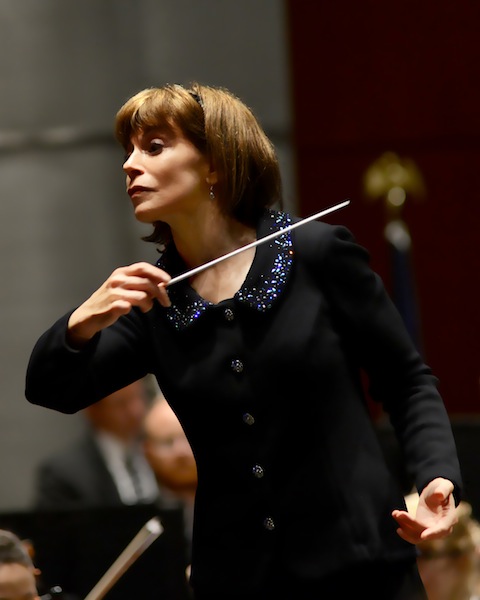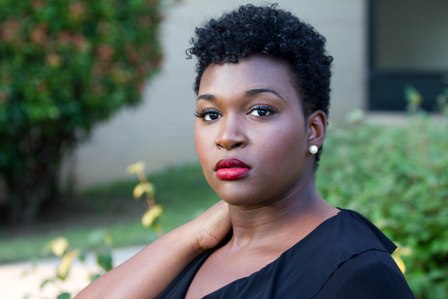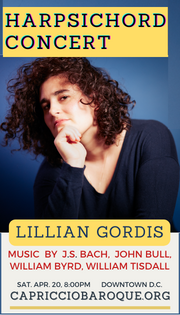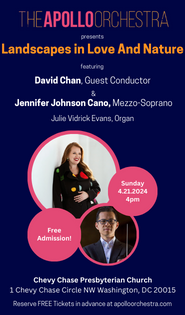NSO celebrates American music of the serious kind at Labor Day concert

JoAnn Falletta conducted the National Symphony Orchestra Sunday night at the U.S. Capitol. File photo: Cheryl Gorski
Outdoor holiday concerts by the National Symphony Orchestra, much like gala concerts, are usually enjoyable for reasons other than the music. Kids can run about, friends can chat, listeners can lie on blankets and stare at the darkening sky. The NSO’s annual Labor Day concert in the past several years has been a largely disappointing crossover affair, but that trend may be changing in the Gianandrea Noseda era.
For the unofficial opening of the second season of the NSO’s new music director, guest conductor JoAnn Falletta led a program of mostly contemporary American music not of the pop variety. The evening was warm and humid on the west lawn of the U.S. Capitol, but the occasional slight breeze brought relief.
Falletta, long-time music director of the Buffalo Philharmonic and the Virginia Symphony Orchestra, appeared last with the NSO when she replaced Noseda at Wolf Trap last summer, following his back injury. She has a record of performing American music with both of her regular ensembles, and she brought a cool, confident hand to this intriguing program. The selections featured an American rainbow of composers, male and female, and including people of color.
After a rousing rendition of The Star-Spangled Banner, the program opened with Fanfare on Amazing Grace by Adolphus Hailstork, an African-American composer who studied at Howard University and has taught most of his life in Norfolk, Virginia. The brass section riffed and rocketed through the active texture, guided expertly by Falletta, with the famous hymn tune shining over it in the strings.
Minnesota-based composer Libby Larsen drew on Sibelius-like harmony and orchestration in her serene Deep Summer Music, from 1982. More percolating activity across the orchestra evoked the growing activity of crops in late summer, which “create a kind of emotional peace and awe” in human eyes, as the composer wrote. Angular trumpet solos came across with a clean, cool edge.
African-American composer Jonathan Bailey Holland captured the self-assured indignation of a poem by Maya Angelou in his new piece Equality. The musical backdrop bristled with agitated percussion punctuating keening dissonances, reflecting the determined words read passionately by soprano Leah Hawkins, already known for her outstanding work in the young artists program of Washington National Opera. Her final statement of the refrain, a vociferous statement of the line “I will be free,” reverberated across the Capitol grounds.

Soprano Leah Hawkins
The only non-American composer on the program was Arturo Márquez of Mexico, represented by his well-known Danzón No. 2, premiered in 1994. The piece’s easy, rocking rhythms paired beautifully with two of the dance episodes from Copland’s ballet score for Rodeo. In both works Falletta navigated the shifts of tempo and meter with consummate grace.
Two NSO soloists vied for bragging rights in head-to-head showpieces, beginning with principal flutist Aaron Goldman in the “Waltz-Clog” movement from William Bolcom’s Lyric Concerto, premiered in 1993 by James Galway and the Saint Louis Symphony Orchestra. Gliding atop the post-Straussian chromatic harmony, Goldman dazzled with impeccable fingerwork, faultless intonation, and a subtly buzzing flutter-tongue technique.
Principal trombonist Craig Mulcahy one-upped his colleague with the dizzying Blue Bells of Scotland by Arthur Pryor, a trombonist and composer who cut his teeth under Capitol Hill’s own John Philip Sousa. Extremes of range, mellifluous legato, cascading trails of fast notes, and even trills all came together in Mulcahy’s hands. Goldman then returned to the stage with mock outrage to challenge Mulcahy to a duel by Flight of the Bumblebee, in a hilarious arrangement that opened with a snippet of “O Fortuna” from Orff’s Carmina Burana.
More traditional pops selections closed the program, including Kessler’s Service Men Medley and the schmaltzy Hooray for Hollywood by John Williams. Carmen Dragon, a California-based arranger and conductor, made a lush arrangement of the hymn tune Shenandoah, featuring the NSO strings, and a barn-storming America the Beautiful. In the latter we got to hear Leah Hawkins sing at last, and her final high note pierced the skies.The closing number, Sousa’s evergreen Stars and Stripes Forever, sent the crowd home on a patriotic note.
The NSO season officially gets under way with the gala concert featuring violinist Joshua Bell, under Gianandrea Noseda, 7 p.m. September 22. kennedy-center.org; 202-467-4600






